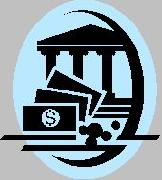
 |
|
| Financial Terms | |
| Confidence indicator |
|
Information about financial, finance, business, accounting, payroll, inventory, investment, money, inventory control, stock trading, financial advisor, tax advisor, credit.
Main Page: investment, tax advisor, business, inventory control, finance, financial, stock trading, money, |
Definition of Confidence indicator
Confidence indicatorA measure of investors' faith in the economy and the securities market. A low or
Related Terms:Confidence levelThe degree of assurance that a specified failure rate is not exceeded. Leading economic indicatorsEconomic series that tend to rise or fall in advance of the rest of the economy. Overbought/oversold indicatorAn indicator that attempts to define when prices have moved too far and too Tick indicatorA market indicator based on the number of stocks whose last trade was an uptick or a Leading IndicatorA variable that reaches a turning point (a peak or a trough) before the economy reaches a turning point. economic components modelAbrams’ model for calculating DLOM based on the interaction of discounts from four economic components. Economic assumptionseconomic environment in which the firm expects to reside over the life of the  Economic defeasanceSee: in-substance defeasance. Economic dependenceExists when the costs and/or revenues of one project depend on those of another. Economic earningsThe real flow of cash that a firm could pay out forever in the absence of any change in Economic exposureThe extent to which the value of the firm will change because of an exchange rate change. Economic incomeCash flow plus change in present value. Economic order quantity (EOQ)The order quantity that minimizes total inventory costs. Economic rentsProfits in excess of the competitive level. Economic riskIn project financing, the risk that the project's output will not be salable at a price that will Economic surplusFor any entity, the difference between the market value of all its assets and the market  Economic unionAn agreement between two or more countries that allows the free movement of capital, Level payThe characteristic of the scheduled principal and interest payments due under a mortgage such that Level-coupon bondBond with a stream of coupon payments that are the same throughout the life of the bond. Resistance levelA price level above which it is supposedly difficult for a security or market to rise. Support levelA price level below which it is supposedly difficult for a security or market to fall. Economic Value Added (EVA)Operating profit, adjusted to remove distortions caused by certain accounting rules, less a charge accepted quality level (AQL)the maximum limit for the number of defects or errors in a process batch-level costa cost that is caused by a group of things economic integrationthe creation of multi-country markets economic order quantity (EOQ)an estimate of the number economic production run (EPR)an estimate of the number economically reworkedwhen the incremental revenue from the sale of reworked defective units is greater than economic value added (EVA)a measure of the extent to which income exceeds the dollar cost of capital; calculated organizational-level costa cost incurred to support the ongoing product- (or process-) level costa cost that is caused by the development, production, or acquisition of specific products or services unit-level costa cost caused by the production or acquisition Economic lifeThe period over which a company expects to be able to use an asset. economic order quantityOrder size that minimizes total inventory costs. economic value added (EVA)Term used by the consulting firm Stern Stewart for profit remaining after deduction of the cost Classical MacroeconomicsThe school of macroeconomic thought prior to the rise of Keynesianism. EconomicsThe study of the allocation and distribution of scare resources among competing wants. Leading IndicatorA variable that reaches a turning point (a peak or a trough) before the economy reaches a turning point. MacroeconomicsThe study of the determination of economic aggregates such as total output and the price level. MicroeconomicsThe study of firm and individual decisions insofar as they affect the allocation and distribution of goods and services. Price LevelA weighted average of prices of all goods and services where the weights are given by total spending on each good or service. Measured by a price index. Supply-Side EconomicsView that incentives to work, save, and invest play an important role in determining economic activity by affecting the supply side of the economy. Multilevel bill of materialAn itemization of all bill of material components, including Single-level bill of materialA list of all components used in a parent item. Level Premium Life InsuranceThis is a type of insurance for which the cost is distributed evenly over the premium payment period. The premium remains the same from year to year and is more than actual cost of protection in the earlier years of the policy and less than the actual cost of protection in the later years. The excess paid in the early years builds up a reserve to cover the higher cost in the later years. Level PremiumA premium that remains unchanged throughout the life of a policy Related to : financial, finance, business, accounting, payroll, inventory, investment, money, inventory control, stock trading, financial advisor, tax advisor, credit. |